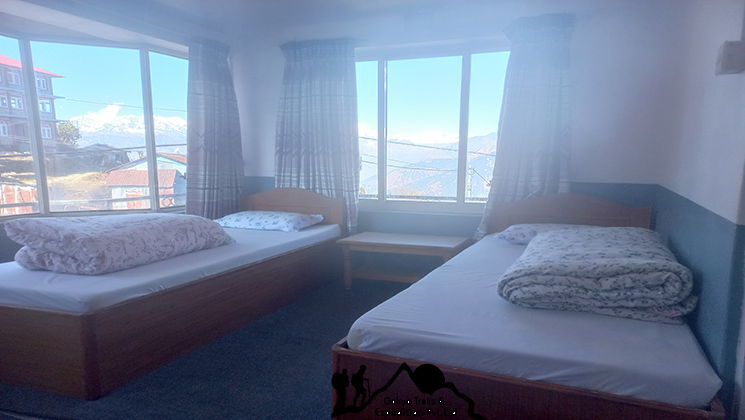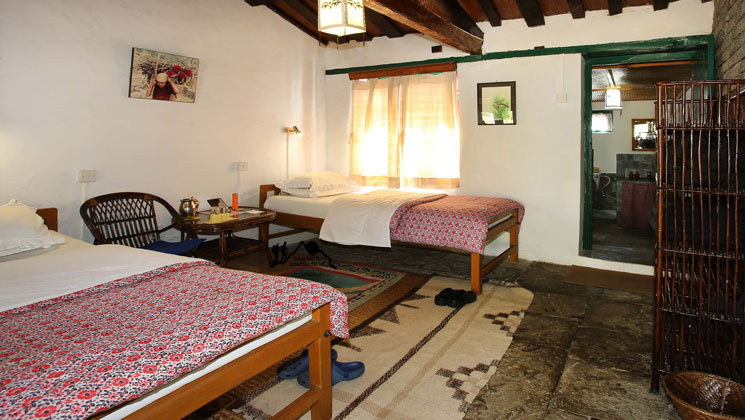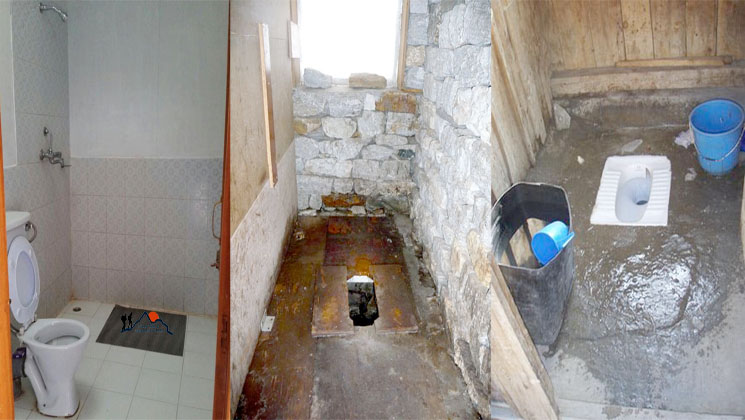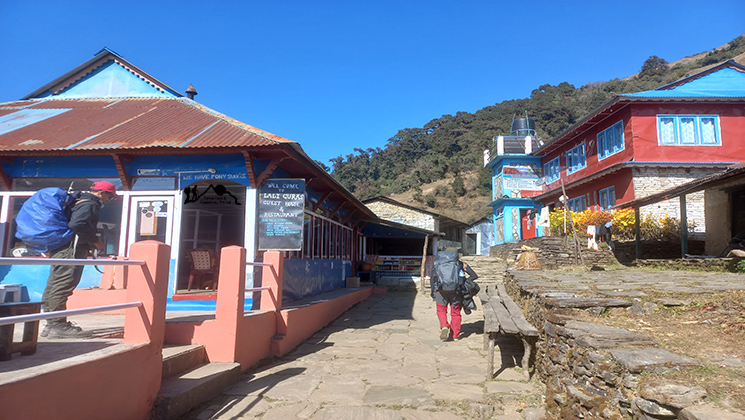Types of Lodge Accommodation in the Mountain
A lodge is a type of accommodation that is typically found in rural or remote areas, such as national parks, mountain ranges, and wilderness areas in the mountains. Lodges are often designed to blend in with their natural surroundings and offer a more rustic or natural experience comparing to traditional hotels or resorts.
Lodges can come in many different shapes and sizes, but they often feature a communal area where guests can relax, socialize, and enjoy meals together. They may also offer private rooms or cabins for guests, which can range from basic to luxurious depending on the lodge’s amenities and level of service.
It operates with a variety of entities, including private companies, nonprofit organizations, and government agencies. Some lodges marks specifically for certain activities, such as hunting, fishing, or hiking, while others are more general-purpose and cater to a wider range of guests.
However, lodge accommodation offers a unique and often more immersive experience comparing to standard hotels, as they allow guests to connect with nature and enjoy the beauty and serenity of remote locations.
Types of lodge accommodation are available in the mountains
Hike in Nepal is a popular trekking destination that offers a variety of accommodation options for trekkers. The types of lodge accommodation available in the Annapurna region vary from basic teahouses to more comfortable lodges with modern amenities. Here are some of the most common types of lodge accommodation facilities available in the Annapurna mountain region:
1. Teahouse
Teahouses, also known as trekking lodges or guesthouses, are a type of accommodation that is possible to find along trekking routes in mountainous regions of the Himalayas. Generally small, family-run establishments provide basic accommodations and meals for trekkers and hikers.
Facilities that you can expect to find at a teahouse include basic rooms with simple furnishings such as a bed, blankets, and pillows. Rooms may private and the bathroom facilities are often sharing and basic, with squat toilets and cold showers.
Similarly, Tea houses usually have a communal dining room to serve meals, and the menu typically includes local dishes such as dal bhat (rice and lentil soup), noodles, and momos (dumplings). Some teahouses may also offer western-style dishes such as pasta and sandwiches.
In addition to accommodation and meals, teahouses may offer other facilities and services such as:
1. Common area for relaxing and socializing with other travelers
2. Basic supplies such as snacks, water, and toiletries for purchase
3. A fireplace or stove for warmth in common areas.
4. Access to electricity to charge electronic devices (although this may require an additional fee).
Staying at teahouses are a popular option for trekkers who are looking for an authentic and affordable experience. Travelers will have a chance to connect with the local culture, meets other trekkers, and experience the beauty of the natural surroundings in a unique way.
2. Normal – Standard trekking guest house
A trekking guest house, also known as a teahouse, is possible to find almost everywhere on the popular trekking trails. Generally they are small, family-run establishments that provide basic accommodations and meals for trekkers and hikers.

Guest houses are usually located in remote areas, far from the comforts of modern civilization. Tourists will have a chance to experience the local culture and way of life, as many of the guest houses are owned and operated by local families.
The rooms in trekking guest houses are generally basic, with simple furnishings such as a bed, blankets, and pillows. Some guest houses may offer shared rooms, while others may have private rooms available for rent. Bathroom facilities are often shared and may consist of squat toilets and basic showers with limited hot water.
In addition to accommodation, trekking guest houses also offer meals and snacks for trekkers. The menu typically includes local dishes such as dal bhat (rice and lentil soup), noodles, and momos (dumplings). Some guest houses may also offer western-style dishes such as pasta and sandwiches.
Likewise, the guest houses are a popular option for trekkers who are looking for an authentic and affordable experience. They offer a chance to connect with the local culture, meet other trekkers, and experience the beauty of the natural surroundings in a unique way.
3. Luxury lodges
Luxury lodges are a relatively new concept in the world of trekking and hiking, and they offer a higher level of comfort and luxury than traditional trekking guesthouses or teahouses. Provides upscale accommodations and amenities to travelers who are looking for a more comfortable and convenient trekking experience.

Comfort or luxury lodges are typically built with stone and wood that are located in remote areas, such as the Himalayas and offer stunning views of the surrounding natural scenery. Rooms are spacious and well-appointed, with comfortable beds, high-quality linens, and modern amenities such as heating and air conditioning.
Many luxury lodges also have private bathrooms with hot showers and flush toilets, which are a rare luxury in more traditional trekking guesthouses. In addition, they offer a range of amenities and services, such as on-site restaurants, spas, and outdoor lounges. The restaurants may serve a variety of international and local cuisine, while the spas offer a range of treatments such as massages, facials, and yoga classes.
While luxury lodges are more expensive than traditional guesthouses or teahouses, they offer a high level of comfort and convenience to travelers who are willing to pay for a more upscale experience. They are a good option for travelers who want to experience the beauty of the Himalayas while still enjoying the comforts of modern life.
Similarity of lodge and teahouse on trekking routes
Lodges and teahouses are both types of accommodation that are commonly found along trekking routes in mountainous regions. While there are some differences between the two, there are also many similarities.
Similarities between lodge and teahouse trekking include:
1. Basic accommodation:
A variety of both lodges and teahouses offer basic accommodation with simple furnishings such as a bed, blankets, and pillows. Rooms are private but bathroom facilities are often shared and basic.
2. Local cuisine:
Most probably both types of accommodation typically offer local cuisines, such as dal bhat, noodles, and momos.
3. Scenic locations:
Usually located in scenic and remote locations, often with stunning views of the surrounding natural scenery.
4. Family-run establishments:
Seems like both lodges and teahouses are often small, family-run establishments that provide a unique opportunity to experience the local culture and way of life.
5. Affordable:
Generally affordable options for trekkers who are looking for a budget-friendly way to experience the beauty of the natural surroundings.
However, there are also some differences between the two types of accommodation. Lodges tend to be larger and more comfortable than teahouses, and they may offer a wider range of amenities such as private bathrooms, hot showers, and electricity. Lodges also tend to be more expensive than teahouses. On the other hand, teahouses are typically smaller and more basic, but they offer a more authentic and rustic experience.
Available Toilets Types on your hikes

In the Everest mountains, the types of toilets available on your hikes can vary depending on the location and the type of lodge or teahouse you are staying in. Here are some of the most common types of toilets you may encounter:
1. Western-style toilets:
Some of the more develop lodges along the trekking routes in the Himalayas have Western-style toilets, which are similar to the toilets found in most developing countries. These toilets typically have a seat and flush mechanism.
2. Squat toilets:
Squat toilets are more common in rural areas and are feasible in many teahouses along the trekking routes. These toilets consist of a hole in the ground and require you to squat over them. Some squat toilets have a small amount of water that you can use to flush.
3. Outhouses:
In more remote areas, you may encounter outhouses, which are simple structures that are built over a hole in the ground. These types of toilets are more basic than other options and may not have a flush mechanism.
Importantly the toilet facilities in the Everest mountains may not be as comfortable or as hygienic as what you are used to at home. It’s a good idea to bring your own toilet paper and hand sanitizer with you, as these items are often not available in all locations.
Additionally, it’s important to follow proper hygiene practices when using the toilet to prevent the spread of illness and maintain the cleanliness of the facilities.
Western-style toilets vs Squat toilets
The choice between western-style toilets and squat toilets often comes down to personal preference, as both types have their advantages and disadvantages.
Western-style toilets are more common use in developed countries as they design for comfortable and easy to use. Usually have a seat and a flush mechanism, which can make them more convenient and hygienic than squat toilets. Western-style toilets also tend to be more accessible for people with mobility issues, as they require less physical effort to use.
Squat toilets, on the other hand, are more common things to use in rural and developing countries. Seems more hygienic than western-style toilets, as there is no contact between the user and the toilet seat. Likewise, Squatting toilets are also said to promote better bowel movements and reduce the risk of constipation.
However, squat toilets are more difficult to use, especially for people who don’t use to squatting. It requires more physical effort and balance, and there is a risk of slipping or falling.
In terms of hygiene, both types of toilets keep clean and sanitary with proper cleaning and maintenance. Important to apply good hygiene practices regardless of the type of toilet you are using, such as washing your hands thoroughly with soap and water after using the toilet.
However, the choice between western-style toilets and squat toilets comes down to personal preference and the situation you are in. If you have a choice, you may want to try both and see which one you are more comfortable with.
In conclusion, many types of accommodations are available in the mountains, and each offers unique experiences to travelers. It is important to consider your budget, preferences, and requirements before choosing a lodge to ensure a memorable and enjoyable stay.

